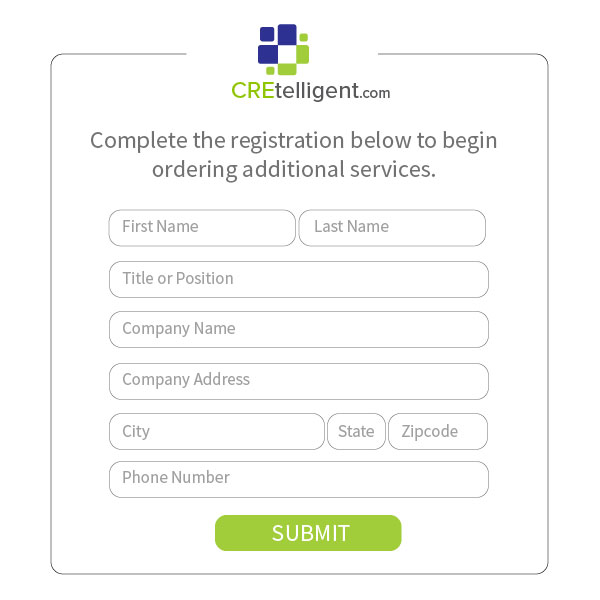Why COVID 19 is Making Collateral Certainty a Necessity for Closing Deals in Today's Environment
By: Anthony Romano | 7/20/20
 In both residential and commercial underwriting, the world has evolved well beyond the practices of the quintessential (and fictional) banker George Bailey at the Bedford Falls Building & Loan. Back then, lending decisions were heavily based on personal relationships and a banker knowing the business and character of the individual applying for the loan. And while character is still considered as one of the “Four C’s of underwriting,” the two C’s that garner the most attention in today’s underwriting process are Credit and Capacity especially in today’s COVID impacted market.
In both residential and commercial underwriting, the world has evolved well beyond the practices of the quintessential (and fictional) banker George Bailey at the Bedford Falls Building & Loan. Back then, lending decisions were heavily based on personal relationships and a banker knowing the business and character of the individual applying for the loan. And while character is still considered as one of the “Four C’s of underwriting,” the two C’s that garner the most attention in today’s underwriting process are Credit and Capacity especially in today’s COVID impacted market.
CRE lenders including traditional banks, credit unions, and non-depository lenders, spend considerable time on credit and capacity, reviewing borrower financial statements and tax returns for insight into cash flow, debt-yield ratio, LTV, loan-to-cost ratio, and profit ratio. These and several other factors are assessed depending on loan type.
But what about the fourth “C” in our underwriting equation? Collateral. With the country and the world in the throes of the COVID pandemic, how does this change the UW of different CRE asset classes given the need to be properly “collateralized.”
During my years with CoreLogic and First American, I watched banks and lenders take different positions on evaluating transaction collateral. Regardless of the institution, the universal mantra was the same: “Collateral is king! The asset secures all loan products. If the first three C’s fail, the only thing saving the lender from substantial loss is a properly collateralized loan. If proper due diligence was not completed during underwriting phase, loss severity can be staggering.
“Collateral Certainty” includes four primary due diligence steps:
• Asset valuation
• Environmental risk assessment
• Property condition inspection, and
• Flood zone determination
Let’s focus on a couple of the more important pieces here…
Asset Valuation. Regardless of loan product, most commercial lending happens with loan-to-value ratios at 70% or below. While there are several different methods and valuation solutions, two products are most common in CRE lending. The first solution is a traditional commercial appraisal (general or MAI), widely considered the most comprehensive and accurate in the industry. The method requires a licensed appraiser, who may or may not be MAI, and can include both a comp-based and income-based valuation. The appraisal process can take 4-6 weeks and can cost, depending on property type, size, location, etc., over $3,500. Valuing residential properties, particularly in homogenous neighborhoods, is typically easier as comparable sales or listings are often readily available. However, valuing commercial properties can be much more challenging and laborious. But getting this step in the collateral certainty process wrong, even by 10%-15%, puts the lender or investor at significant risk in the event of default.
Another, and increasingly common, valuation product is the commercial evaluation because it is a faster, more cost effective, yet fully compliant commercial valuation solution. Turn times for commercial evaluations often clock in at under ten days and cost a fraction of a full appraisal. But as you would expect, rules and regulations apply to different use cases. First, commercial evaluations can only be used on loans $500,000 and less (*unless the lender is a credit union – then loan amount can be up to $1 million). Complicating things further, 23 states do not allow anyone but a USPAP licensed appraiser to “conclude the value” for a property. As a result, costs and turn times for this alternative tend to be a bit greater in these states. Brokers may do the field work and data collection, but the selection of comparables and value conclusions must be completed and signed off by a licensed appraiser.
Now that the valuation has been done and the loan is properly “collateralized,” a lender can ride off into the sunset fully confident nothing short of a meteor can negatively impact the asset’s collateral value, right?
Wrong!
While CRE valuation is the most significant step toward collateral certainly; it is not enough on its own. The second critical CRE due diligence step that needs to be completed is the environmental assessment. Much like valuation, there are many types and scopes of environmental assessment products, but they can be sorted into two buckets.
In the first bucket are desktop environmental assessments, often referred to as RSRA – Record Search with Risk Assessment. Desktop reports leverage environmental regulatory database information, historical aerial photos, Sanborn/Fire Insurance maps, city directories, and information provided by stakeholders (questionnaires, prior environmental reports, etc.). Once this data is assembled, an Environmental Professional evaluates the findings, writes the narrative, and makes recommendations for further assessment if necessary. Desktop reports are excellent tools for speedy and low-cost evaluation of benign properties (i.e. low risk assets) and smaller loan amounts. The SBA is the most prescriptive entity in the environmental due diligence space and they allow an RSRA on loans over $150,000 if the property type is NOT one of the 53 environmentally sensitive industries listed in the NAICS codes (North American Industry Classification System).
In the second bucket are environmental assessment products that feature in-person site reconnaissance in addition to the historical and other resources listed above. The two that conform to ASTM standard practice are:
- Transaction Screen Assessment (TSA) or Environmental Transaction Screen (ETS); and
- The gold standard of environmental due diligence products the Phase I Environmental Site Assessment (ESA), which offers the most comprehensive historical review, of regulatory database review, owner/operator interview, government file request and review, client provided information review and a detailed visual/physical inspection of the site property and adjacent properties.
Often an ETS/TSA is called a “limited or scaled down version of the Phase I.” These reports are a little less costly and comprehensive than Phase I ESAs, but are a strong alternative to the RSRA when having boots on the ground is required. The key difference between the ETS/TSA and the Phase I ESA– and it’s a crucial one – only the Phase I ESA meets the EPA’s All Appropriate Inquiry (AAI) requirement qualifying lenders and investors for Comprehensive Environmental Response, Compensation, and Liability Act – CERCLA protection should a historical use of the asset resulted in a costly environmental investigation and/or remediation effort.
So, while collateral may be king, be sure to work with a firm that provides an array of valuation and environmental assessment products because only then can all stakeholders be assured of “Collateral Certainty.”
Call (855) 941-2400 to learn more about Collateral Certainty or email support@escreenlogic.com.

















